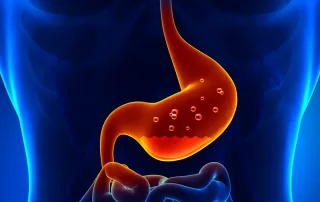Overview
Acid reflux, also known as gastro-oesophageal reflux (GOR or GER), occurs when stomach acid flows back into the oesophagus, the tube that connects the throat to the stomach. This backflow, or reflux, can irritate the lining of the oesophagus, leading to symptoms such as heartburn, a burning sensation in the chest, regurgitation of food or sour liquid, and difficulty swallowing.
Acid reflux is a common condition that affects many people occasionally, but when it occurs frequently, it can lead to gastro-oesophageal reflux disease (GORD or GERD), a more severe form of reflux. Factors that contribute to acid reflux include certain foods and drinks (like spicy foods, chocolate, caffeine, and alcohol), obesity, smoking, pregnancy, and certain medications.
Lifestyle changes can often help manage reflux symptoms. These include eating smaller meals, avoiding food and drinks that trigger reflux, not lying down immediately after eating, maintaining a healthy weight, and quitting smoking. Over-the-counter medications, such as antacids, H2 blockers, and proton pump inhibitors, can also reduce symptoms by neutralising stomach acid or reducing its production.
If symptoms persist despite these measures, it is important to consult a healthcare provider, as untreated GORD can lead to complications like oesophagitis (inflammation of the oesophagus), oesophageal strictures (narrowing of the oesophagus), and Barrett’s oesophagus, a condition that increases the risk of oesophageal cancer.


